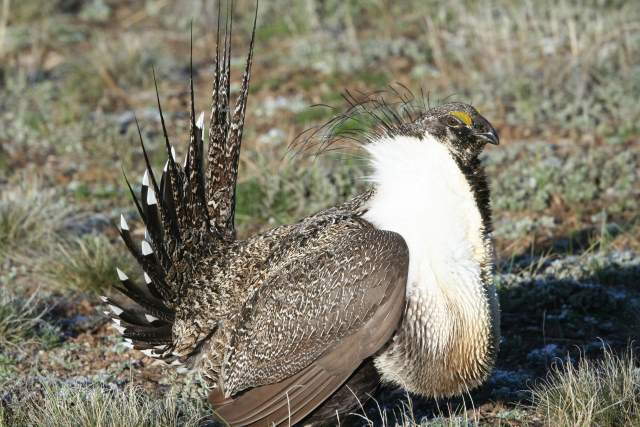Sage grouse, Western ranchers dodge the ESA bullet, sort of
September 23, 2015

The great rejoicing heard across the West earlier this week came as Secretary of the Interior Sally Jewell announced that listing the Greater sage grouse under the Endangered Species Act (ESA) is not warranted at this time.
Or maybe it was a collective sigh of relief. The controversy surrounding the Greater sage grouse has been broiling and bubbling for many years, and the threat of an ESA listing hanging over the heads of Western ranchers has been burdensome.
The decision to not list the iconic bird is generally regarded as the outcome of a significant effort by state wildlife agencies in the 11 Western states where the bird resides, along with private landowners and various federal agencies to craft a plan that allows for conservation efforts while allowing livestock grazing, energy development and other land uses to continue.
And it is. To that end, it will hopefully serve as a model for other species in other parts of the country.
But in spite of the jubilation at finally getting an answer, at least for the moment, there is some skepticism as well. “The Administration came to the logical decision not to list the sage grouse, but went ahead and forced through their land use plans, which are just as concerning as a listing,” says Brenda Richards, Public Lands Council president. “Instead of recognizing the stewardship that land users have voluntarily put in place, they are pushing forward their agenda which ignores multiple use on our lands.”
According to NCBA, House Committee on Natural Resources Chairman Rob Bishop (R-Utah) says the decision was a cynical ploy, calling the Obama Administration’s oppressive land management plan the same as a listing.
“Do not be fooled,” said Chairman Bishop in a statement. “The announcement not to list the sage grouse is a cynical ploy…The new command and control federal plan will not help the bird, but it will control the West, which is the real goal of the Obama Administration. Some Western governors see this for what it is and I will work with them to ensure the rational plans created at the grassroots level that solve the problem will be the way forward to protect this bird.”
Skepticism aside, it’s likely that many people in the West consider the decision to not list the bird as a huge victory. Whether or not it’s a lasting victory remains to be seen.
But the hope is that the efforts leading up to the non-decision will serve as a precedent and a road map for other species. Just days before announcing the sage grouse decision, the Fish and Wildlife Service announced it will assess the status of four wildlife species found in the Midwest to determine whether or not protection under the Endangered Species Act is warranted. The Service is seeking input as it conducts in-depth studies of the northern bog lemming, wood turtle, rusty-patched bumble bee and regal fritillary, a butterfly.
The Service is initiating status reviews in response to a variety of petitions seeking to protect 25 species under the Endangered Species Act.
So the effort continues. As landowners in the Midwest and wherever those additional 25 species now in the que for a listing decision live, they have only to look west for some hard-won lessons on how to deal with the challenge.
You might also like:
Will beef demand keep up with cowherd expansion?
What's the best time to castrate calves? Vets agree the earlier the better
Basics and benefits of fixed time-AI
Who's the biggest seedstock producers in the U.S.?
How to prevent & treat pinkeye In cattle
How to get more than a preg-check from the vets preg-check visit
You May Also Like



